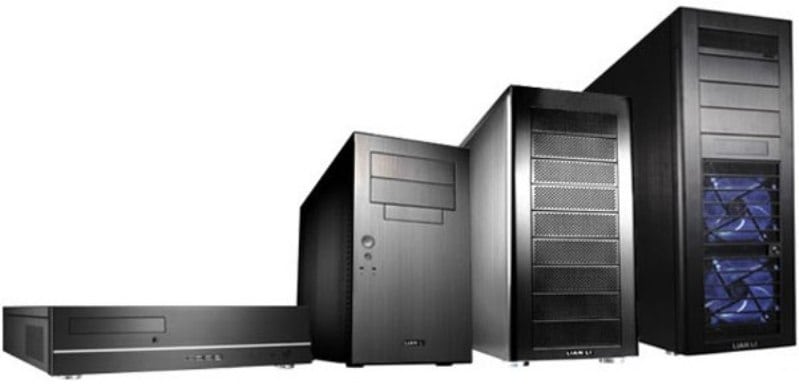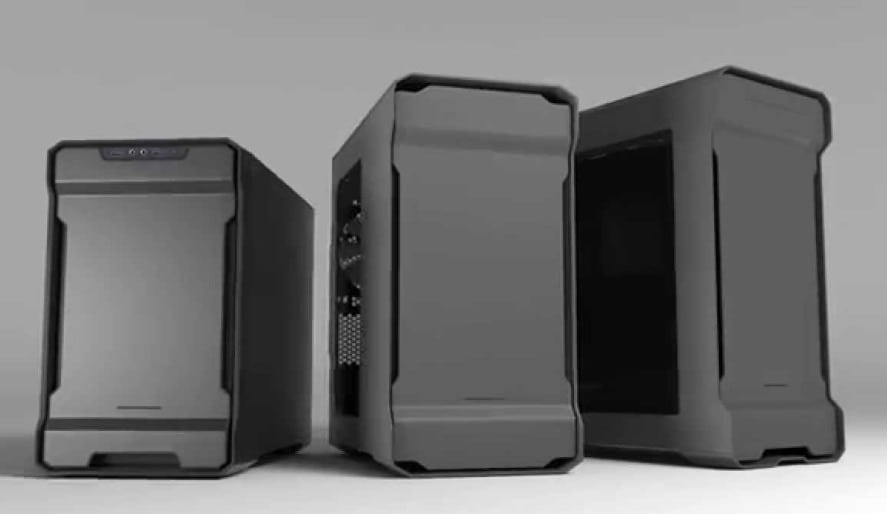Any avid gamer knows that fewer things evolve and develop faster than the average desktop personal computer. But amidst all this, one thing remains constant – the miniaturization of the core processing units.
It was just a few decades ago when computers used to take up humongous spaces, at times even as big as an entire room. Fast forward, and currently, you can easily land a fully-fledged high-powered gaming PC as small as your briefcase. You might be wondering how such a small-sized PC can pack such mind-blowing graphics processing speed. The answer lies in the computer cases and motherboard which houses all the main components of a PC including the CPU, Memory, and GPU.
These gaming PCs typically utilize smaller-sized cases and motherboards that are below a certain size threshold, also known as small form-factor processing motherboards. Here, we will be comparing mini ITX vs micro ATX cases so as to fully understand their strengths and shortfalls.
So speaking of small computer cases, between the top two contenders, i.e., Micro-ATX vs Mini-ITX, which one trumps the other one as far as building a holistic gaming machine goes? Let’s see.
Difference Between Mini ITX and Micro ATX
Size is the main difference between micro-ATX, and mini-ITX cases. The industry sizes for each are as follows:
Micro-ATX (mATX): 9.6 inches x 9.6 inches
Mini-ITX (mITX): 6.7 inches x 6.7 inches

- Micro-ATX cases (sometimes referred to as μATX, uATX or mATX) are similar to standard ATX cases, but are a few inches shorter in length. The advantages of micro-ATXs is that these cases fit smaller motherboards if necessary.
- Mini-ITXs are much smaller cases that can fit Mini-ITX motherboards with both length and height shorter than both micro-ATXs and standard-ATXs. They usually have only one PCIe lane and are compatible with far more small form-factor cases.
Mini ITX vs Micro ATX Compared
1. The Costs of Mini ITX vs Micro ATX
All other factors held constant; a Mini-ITX system would theoretically cost less than a Micro-ATX system. And this is mainly because the mini-ITX employs a smaller case and motherboard in comparison to the average micro-ATX GPU processor. This will then translate to less raw materials, lower labor input costs, and less intensive manufacturing infrastructure. What’s more, mini-ITXs don’t use any exotic components in their assembly, so their manufacture is not in any way difficult. In other words, they ought to be cheaper than the ATX cases.
Recommended: GTX 970 Gaming Graphic Cards Reviewed
The difference comes in after the introduction of other separate but related parts such as the motherboard’s power supply. As you may already know, Some of the best Mini-ITX cases such as this Thermaltake Core V1 Mini ITX cube computer case comes with systems utilizes a unique PSU processing form factor known as the SFX. And these PSUs are not as common as the regular ATX chip units. Consequently, the SFX PSU is pricier than the ATX’s power supply system for nearly the same build quality and output. Hence, it is very hard to bump on a Mini-ITX case for less than 50 US, especially if your target is extras such as ‘gold’ ratings or modular cables.
2. The Performance of Mini ATX vs Micro ITX
Aside from cost, the performance is the next big thing that gaming machine builders consider. After all, no one wants to end up with a laggy machine that can barely handle the graphic intensive games that currently dominate our gaming stratosphere.
Benchmark readings alone, Mini-ITX motherboards have the upper hand here. Here’s why.
Ground level Mini-ITX boards such as this GIGABYTE GA-Z270N-Gaming 5 LGA1151 Intel Z270 Mini-ITX DDR4 Motherboard can effortlessly overclock a full-sized ‘premium’ ATX motherboard. And this is thanks to the design that puts the extra voltage-regulation processing modules on a pre-mounted riser card. Therefore, the board’s form factor does not leave much room for the addition of any bonus power phases.
That being said, if you plan on running more than a single video card concurrently, then only a micro-ATX board is big enough to accommodate such. The larger case that the board boast of, also implies that there’s plenty of room to liquid-cool the system during high overclocks.
On the basis of performance alone, the Micro-ATX takes it hands down. However, factoring in sheer practicality when it comes down to handling massive graphics-intensive games, the Mini-ITX is the most suitable.
3. Availability and Shopping Options
Strictly genealogically speaking, Micro-ATX cases and boards have been around for a longer time than its newer and younger counterpart. This then implies that the engineering technology that it employs is by far more mature, seasoned, and developed. In addition to this, there’s also a broader range of more developed boards among the crop of Micro-ATX boards. As a consequence, you can fine-tune and adjust your operating budget in accordance with your individual preference and affordability. On the other hand, there’s no such flexibility when dealing with mini-ITX boards.
Still on this, Micro-ATX boards suffer from a notable lack of variety, a majority if not all, are designed for the ATX hardware infrastructure. If you’re looking for something a little more compatible with different manufacturers, developers, and enterprising modders, you may want to go the mini-ITX way.
4. Ergonomics of Micro-ATX vs Mini-ITX
Mini-ITX systems have the ill reputation of being more selective to power supply systems comfortably. Mostly, this is brought about by the less space clearance that these small boxes have. A typical example is the Cooler Master 130 Elite that is capable of accommodating a regular-sized average regular-sized PSU but not without the unit sticking out awkwardly by an inch or two.
On the side of the spectrum, a micro-ATX system such as the Corsair Obsidian Series 350D Performance Micro ATX can accommodate almost anything that is sensibly-sized. Don’t forget that you still have to factor in the accessibility of the system’s fan mounts, drive cages, and, most importantly, the motherboard connectors. This will help you avoid building a ‘shoebox’ tower where you have to re-assemble the unit each time you want to fiddle with just one or two internal components.
All said and done; the Mini-ATX system is undeniably less bulky, lighter, smaller, easier to carry around and more compact. Besides, it can easily blend in with an existing room decor or home theater unit.
5. Ease of Upgrading a Mini ITX vs Micro ATX
Any builder or serious gamer fancies expandability and ease of improvement, that’s why most choose to build/customize their own systems in the first place. All Mini-ITX boards have only one pair of RAM slots. This is a far cry compared to the four slots that the micro-ATX is known for, which translates to more options and ease of upgrading in the future. And it does end there. Mini-ITX towers also have just a single card slot that is reserved for the GPU. That implies that it is not possible to add peripherals such as sound cards, wireless routers, USB 3.0 ports, adapters, or that SATA Express that is on the lips of every gamer.
See Also: Everything You Should Know About ATX vs Micro ATX Motherboards and Cases
The Verdict
There’s no denying that these two are the cream of the best small standalone cases in the gaming realm. If you’re more interested in performance, the limited space of a mini-ITX tower will surely get in the way. But if you want an HTPC, then the mini-ITX is evidently the best pick. Nonetheless, the trophy of “Ease of Upgrading Winner” goes to the Micro-ATX which can accommodate more extras among the two top options. Choose wisely, won’t you?

